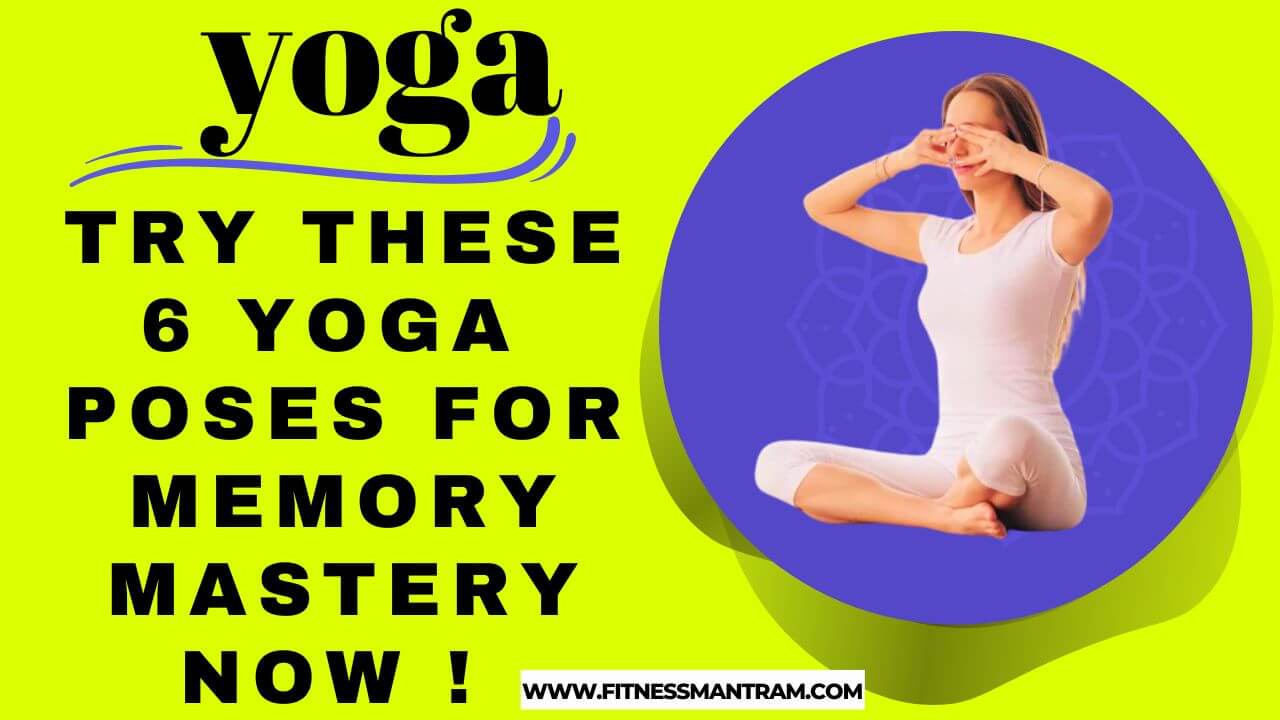Boost Memory Power Now: Try These 6 Yoga Poses for Memory Mastery!”
“Discover the transformative power of yoga as we explore 6 Yoga Poses for Memory Mastery to sharpen your mind and boost focus.”
Impact-Site-Verification: e4d8ee70-6167-4f83-8412-a1a0ebda86fb
Unlock the secrets to sharper memory and enhanced concentration with these 6 powerful yoga poses for Memory Mastery. Dive into the world of yoga and discover how ancient practices can boost cognitive function and mental clarity.
Harnessing the Power of Yoga for Cognitive Enhancement
In today’s fast-paced world, where distractions abound and information overload is a constant challenge, maintaining sharp memory and unwavering concentration is more crucial than ever. As we navigate through our daily lives juggling work, studies, and personal commitments, it’s easy to feel mentally drained and unfocused.
But fear not! There’s a natural and holistic solution to sharpen your cognitive abilities and enhance your mental clarity: yoga. Yes, you read that right! Yoga isn’t just about physical flexibility and relaxation; it’s also a powerful tool for boosting memory and concentration. In this comprehensive guide, we’ll delve into the world of yoga and explore six potent yoga poses specifically designed to improve memory retention and enhance focus.
Understanding the Science Behind Yoga and Memory Enhancement
Before we dive into the specific yoga poses, let’s take a moment to understand how yoga influences our cognitive functions. Yoga, an ancient practice originating from India, encompasses physical postures, breathing techniques, and meditation. When practiced regularly, yoga has been shown to offer a myriad of benefits for both the body and mind.
Research suggests that certain yoga asanas (poses) stimulate the brain’s cognitive centers, promote relaxation, and reduce stress levels. Moreover, yoga encourages mindfulness, which is the practice of being fully present and engaged in the moment. By cultivating mindfulness through yoga, individuals can improve their attention span, enhance memory consolidation, and combat mental fatigue.
Click Here to take a personalized guidance tailored to your unique needs and goals.
The 6 Yoga Poses for Memory Mastery and Concentration
1. Padmasana (Lotus Pose)
Padmasana, also known as the Lotus Pose, is revered for its ability to calm the mind and improve focus. To perform Padmasana, sit cross-legged on the floor and place each foot on the opposite thigh. Keep your spine straight and your hands resting on your knees. Close your eyes, focus on your breath, and feel a sense of tranquility wash over you.
Why should you practice Padmasana: It is ideal for those seeking to enhance concentration and cultivate a sense of inner peace. It promotes mental clarity and reduces stress levels, making it particularly beneficial for individuals with busy lifestyles or high-stress jobs.
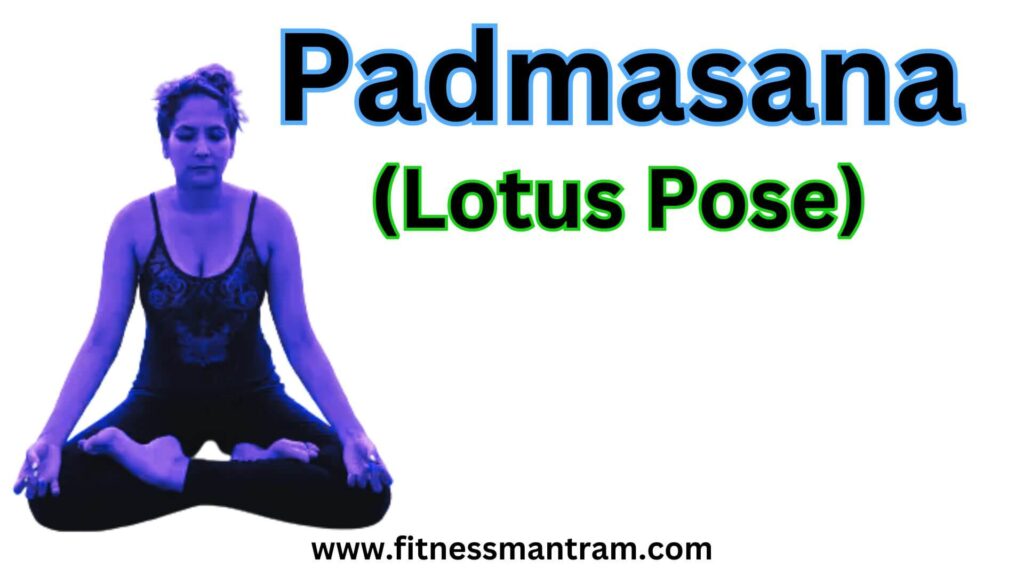
Benefits of Padmasana:
- Enhances concentration : By maintaining a steady posture and focusing on the breath, concentration improves.
- Relieves stress: Padmasana promotes relaxation, reducing stress and anxiety levels.
- Stimulates the brain: This pose activates the brain, enhancing cognitive function and memory.
2.Sirsasana (Headstand)
Sirsasana, or the Headstand, is often referred to as the “king of all yoga poses” due to its myriad of benefits, including improved circulation to the brain. Begin by kneeling on the floor and interlocking your fingers, placing the crown of your head on the mat. Slowly lift your legs off the ground, extending them upward until your body forms a straight line.
Who should practice this Padmasana: Students preparing for exams, professionals dealing with demanding workloads, and anyone looking to quieten the mind and improve focus can benefit from practicing Padmasana.
Why should you practice Sirsasana: Sirsasana increases blood flow to the brain, improving cognitive function and enhancing mental clarity. It also strengthens the upper body and improves balance.
Who should practice Sirsasana: Individuals experiencing mental fatigue, seeking to boost creativity, or looking to challenge themselves physically and mentally can incorporate Sirsasana into their practice.

Benefits of Sirsasana:
- Boosts blood flow to the brain: Increased blood flow enhances cognitive function and concentration.
- Enhances mental clarity: The inversion promotes mental clarity and sharpness of mind.
- Improves memory retention: Sirsasana stimulates the brain, aiding in memory consolidation.
Related Post: Why is Yoga for Everyone
3 Paschimottanasana (Seated Forward Bend)
Paschimottanasana, the Seated Forward Bend, is an excellent pose for calming the mind and relieving stress. Sit on the floor with your legs extended in front of you. Inhale deeply, then exhale as you hinge at the hips and fold forward, reaching towards your feet. Keep your spine elongated and your gaze directed forward or towards your toes.
Why should you Practice Paschimottanasana: This pose calms the mind, relieves stress, and encourages introspection, making it beneficial for those dealing with anxiety or racing thoughts. It also stretches the spine and hamstrings, promoting flexibility.
Who should practice Paschimottanasana: Individuals experiencing high levels of stress, struggling with anxiety, or seeking to improve flexibility can benefit from practicing Paschimottanasana regularly
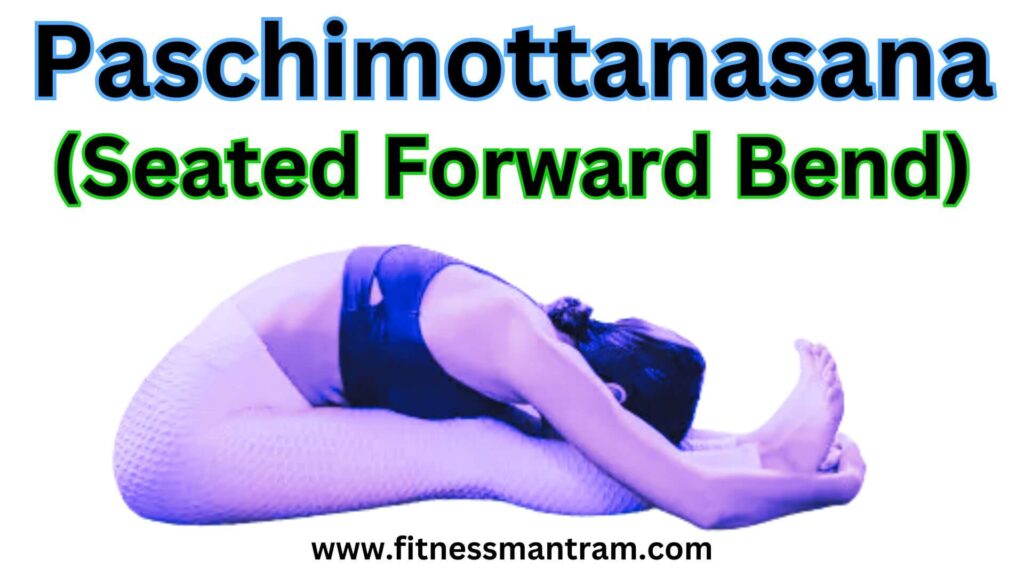
Benefits of Paschimottanasana:
- Calms the mind: Paschimottanasana induces a sense of tranquility, reducing mental chatter.
- Improves focus: The forward fold encourages introspection, enhancing focus and concentration.
- Relieves anxiety : This poses releases tension in the body and mind, alleviating anxiety symptoms.
4.Bhramari Pranayama (Bee Breath)
Bhramari Pranayama, or the Bee Breath, is a breathing exercise that calms the mind and soothes the nerves. Sit comfortably with your eyes closed and take a deep breath in through your nose. As you exhale, make a gentle humming sound like a bee, allowing the vibrations to resonate in your head.
Why should you practice Bhramari Pranayama: Bhramari Pranayama induces relaxation, reduces stress and anxiety, and clears the mind. It’s an accessible breathing exercise suitable for individuals of all fitness levels.
Who should practice Bhramari Pranayama: Anyone looking to manage stress, improve mental well-being, or incorporate simple breathing techniques into their daily routine can practice Bhramari Pranayama.
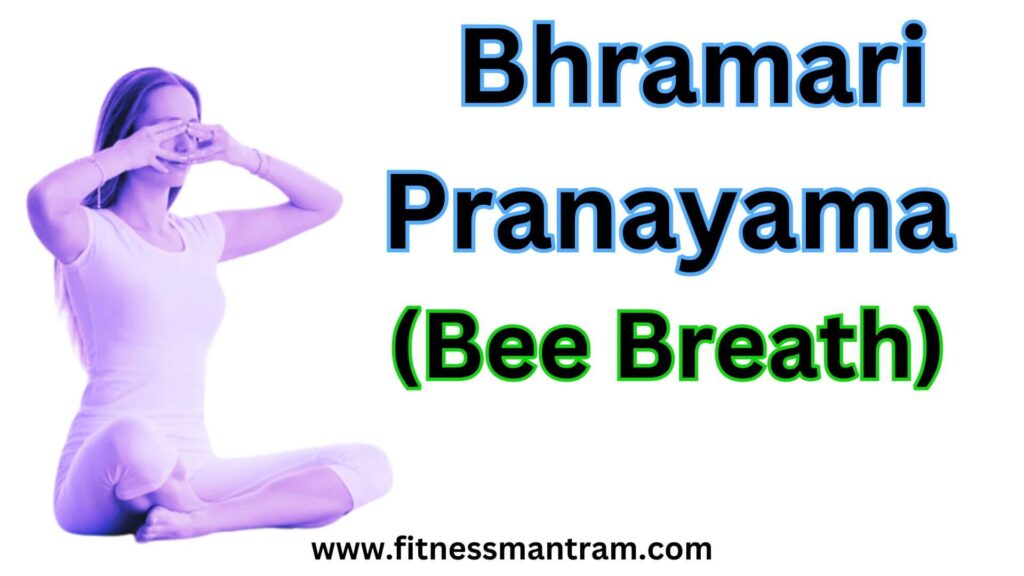
Benefits of Bhramari Pranayama:
- Reduces stress and anxiety: The humming sound activates the parasympathetic nervous system, inducing relaxation.
- Enhances cognitive function: Bhramari Pranayama clears the mind and improves mental clarity.
- Promotes mindfulness: Focusing on the breath cultivates mindfulness, enhancing present-moment awareness.
5.Vrikshasana (Tree Pose)
Vrikshasana, the Tree Pose, symbolizes stability and balance. Stand tall with your feet hip-width apart and root down through your left foot. Lift your right foot and place it on your left inner thigh or calf, avoiding the knee joint. Bring your hands to prayer position at your heart center and find a focal point to steady your gaze.
Why should you practice Vrikshasana: Vrikshasana improves balance, focus, and stability while instilling a sense of calm and inner peace. It’s a grounding pose that connects practitioners with nature.
Who should practice Vrikshasana: Individuals seeking to enhance their balance, concentration, or connection with nature can benefit from incorporating Vrikshasana into their practice.
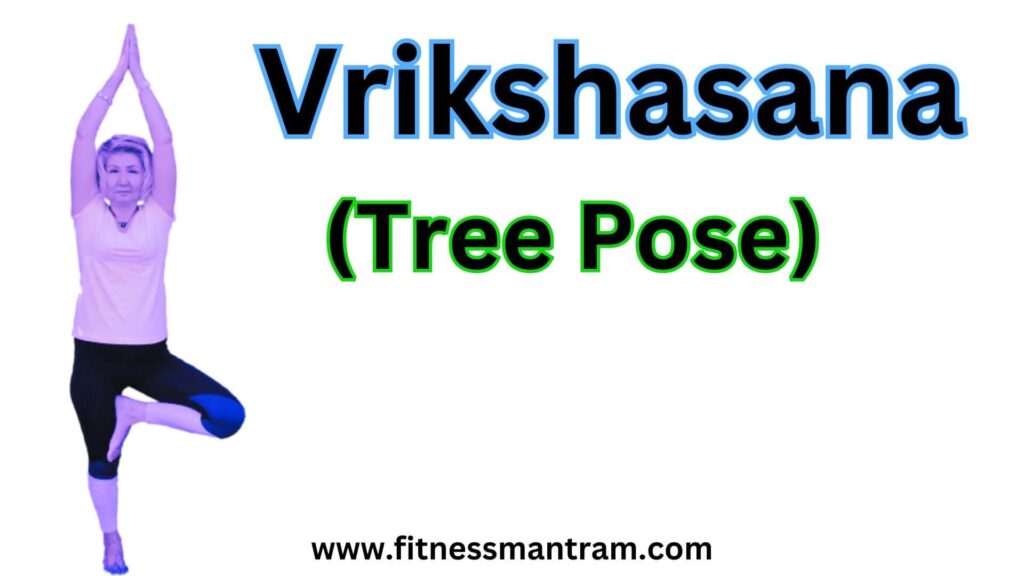
Benefits of Vrikshasana:
- Improves balance: Vrikshasana strengthens the muscles of the legs and core, improving balance.
- Enhances focus: Balancing poses require concentration, sharpening your focus and attention.
- Instills a sense of calm: Connecting with nature through the Tree Pose promotes inner peace and tranquility.
6.Nadi Shodhana Pranayama (Alternate Nostril Breathing)
Nadi Shodhana Pranayama, or Alternate Nostril Breathing, is a powerful breathing technique that balances the flow of energy in the body and calms the mind. Sit comfortably with
your spine straight and your left hand resting on your left knee. Use your right hand to close your right nostril with your thumb and inhale deeply through your left nostril. Then, release your thumb and close your left nostril with your ring finger as you exhale through your right nostril. Continue this alternating pattern for several rounds.
Why should you practice Nadi Shodhana Pranayama: This pranayama technique balances the nervous system, clears the mind, and enhances concentration. It’s particularly beneficial for those seeking mental clarity and emotional balance.
Who should practice Nadi Shodhana Pranayama: Individuals looking to regulate their breath, reduce anxiety, or improve focus and concentration can incorporate Nadi Shodhana Pranayama into their daily routine.

Benefits of Nadi Shodhana Pranayama:
Benefit Description
- Balances the nervous system: Alternate Nostril Breathing harmonizes the sympathetic and parasympathetic nervous systems.
- Clears the mind: This pranayama technique clears mental fog and enhances mental clarity.
- Improves concentration: By regulating the breath, Nadi Shodhana Pranayama enhances focus and concentration
Explore our beginner-friendly yoga classes to kickstart your practice and unlock your cognitive potential.
Conclusion:
Elevate Your Mental Fitness with Yoga
Incorporating these six yoga poses into your daily routine can be a game-changer for your cognitive health and overall well-being. Whether you’re a seasoned yogi or just starting your yoga journey, these poses offer a holistic approach to boosting memory, enhancing concentration, and cultivating mental clarity.
So, roll out your yoga mat, take a deep breath, and embark on a journey of self-discovery and cognitive enhancement through the transformative power of yoga. Remember, a sharp mind is the key to unlocking your full potential in every aspect of life. Namaste!
Join our online yoga burn challenge for daily inspiration, tips, and support on your wellness journey.
Frequently Asked Question.
Q1. How often should I practice these yoga poses to see noticeable improvements in my memory and concentration?
A. Consistency is key to seeing results. Aim to practice these yoga poses at least 3-4 times per week for optimal benefits. Even short daily sessions can make a difference over time
Q2. I’m a beginner to yoga. Are these poses suitable for someone with limited experience?
A. Yes, these poses are beginner-friendly, but it’s essential to listen to your body and practice with awareness. Start slowly, focus on proper alignment, and feel free to use props or modifications as needed to ensure comfort and safety.
Q3. Can practicing yoga really help me manage stress and anxiety, and how do these poses specifically contribute to stress reduction?
A. Absolutely! Yoga has been shown to reduce levels of cortisol, the stress hormone, and promote relaxation. These poses, such as Paschimottanasana and Bhramari Pranayama, encourage deep breathing, activate the parasympathetic nervous system, and induce a state of calmness, effectively reducing stress and anxiety.
Q4.I have a busy schedule. Are there any modifications or shorter sequences I can do to still reap the cognitive benefits of these poses?
A. Absolutely! You can create a condensed yoga routine by selecting a few key poses from this list and practicing them for a shorter duration, such as 15-20 minutes. Focus on poses that target relaxation and mindfulness, such as Bhramari Pranayama and Padmasana, to reap the cognitive benefits in a shorter amount of time.
Q5. Are there any contraindications or precautions I should be aware of before practicing these poses, especially if I have certain medical conditions or injuries?
A. It’s essential to practice yoga mindfully and consult with a healthcare professional if you have any underlying medical conditions or injuries. Certain poses, like Sirsasana (Headstand), may not be suitable for individuals with neck or back issues, while others, like Vrikshasana (Tree Pose), may require modifications for stability. Listen to your body, honor its limitations, and seek guidance from a qualified yoga instructor if needed to ensure a safe and beneficial practice.
Ready to boost your memory and focus? take your Yoga Burn Challenge Today!
Read More:
- Swastikasana: Discover the Hidden Benefits of Swastikasana
- Gomukhasana: Discover the Healing Power of Gomukhasana
- Dhanurasana: Unleashing the Power of the Bow Pose.
- Padmasana: 10 Amazing Benefits of Padmasana
- Vajrasana: Ultimate Guide to this Ancient Yoga Pose
Disclaimer
The details & information given here in this article is based on information as available on other published site on internet. Do take medical advice before adopting it. Fitness Mantram Does Not Confirm It. This site contains affiliate links. If you choose to make a purchase after clicking a link the author/owner/creator may receive a commission at no ADDITIONAL cost to you. Thank you for your support.
